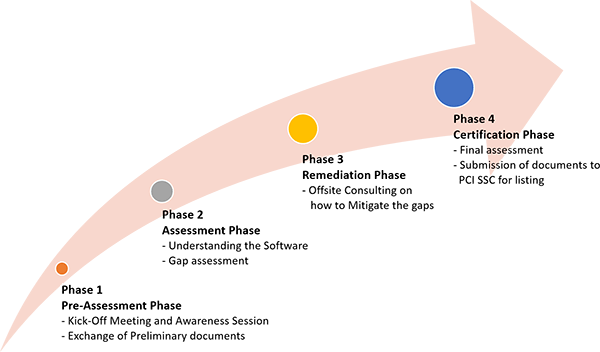How is PCI SLC Assessment Process is Conducted in an Organization?

PCI SLC Assessment
Various online facilities like shopping, booking, learning, and others are trending with the people in this digital generation. Online payment transactions using credit or debit card is very convenient and user friendly. People prefer making payments using these options as they do not need to carry cash all the time. Making this online transaction safe and secure is the responsibility of the business owner providing this option. Thus he should make sure that the payment application is designed to comply with the regulatory requirements.
Importance of PCI SLC assessment:
The payment application vendor or the application designer should incorporate all the requirements specified by Payment Card Industry (PCI). The software security Framework (SSF) defines the standards and guidelines that are mandatory for the payment application.
Steps involved in the SLC framework:
The application developer needs to use a detailed plan to develop or design the payment application. Various steps are included in the software life cycle (SLC). These steps in SLC are concerned about the application development, post-development, and even the maintenance phase of the payment application. For getting the compliance, the vendor or application developer has to fulfil all the requirements necessary for PCI SLC assessment. These steps in SLC include:
Planning and analysis or requirements: Planning is the most important step in software development. The designer first should understand the objective of designing the application and based on this has to make the plan for the application. It needs support from customers, sales department, market survey, etc. The vendor then needs to analyze the requirements for designing this application while considering the risks associated with it.
Defining: In this step, the actual procedure and method for developing the software are defined and documented. In this step, the Software Requirement Specification (SRS) documents required for SLC are generated.
Product architecture and designing: The product architecture is defined and documented in Design Document Specification (DDS) that considers various parameters like product robustness, risk assessment, design modularity while considering the budget and time constraints.
Building: This is the step where the software is built with the help of different tools like computers, debuggers, interpreters, and different programming languages and coding techniques.
Testing: The software designed is tested for various defects. These reports are tracked, reported, and fixed. The software is again re-tested once the issue is solved.
Deployment to market: Once the software passes the testing phase, the software is released formally into the market. Once the product is in the market, the different users use this software and the feedback is reported. Based on this feedback, the developer gets their suggestions for enhancement or improvement. This will help them to improvise the software.
Maintenance: The software developer should help their customers in maintaining the software. The developer can provide the manual and training to their customers that will help them to use it efficiently and maintain its functional robustness.
The application developer must follow all the steps mentioned in the SLC framework. Following the proper path for the software development leads to developing a robust application that passes PCI SLC assessment and is well protected from cyber-attacks.